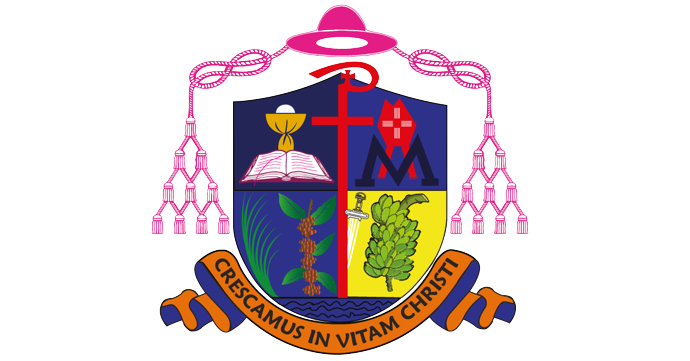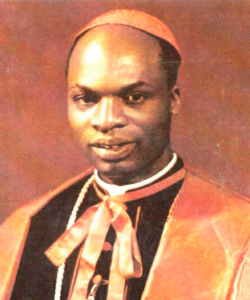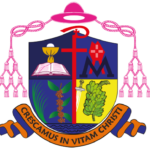The historic erection of the Metropolitan Archdiocese of Kampala and subsequent appointment and installation of its leader, Archbishop Emmanuel Kiwanuka Nsubuga, on October 30, 1996, brought to a close the Middle Ages, so to say, of the Catholic faith in Uganda. The period is traced from the administration of the Bishop Livinhac who was appointed by Pope Leo XIII in 1883 to lead the Diocese of Lubaga.
The era reached its peak following the death, on February 22, 1966, of Archbishop Dr. Joseph. N. Kiwanuka, who was its head since 1961. Archbishop Kiwanuka was the first African, south of the Sahara, to be appointed a bishop, in 1939. He was consecrated by Pope Pius XII, in St. Peter’s Basilica, Rome, on the Solemnity Feast of St. Peter and Paul, on June 29, 1939. Archbishop Kiwanuka took possession of the Archdiocese of Lubaga at a critical political time when the country was at the thrash hold of its independence.
This was the time for the famous Lancaster House London Conference that paved the way for the attainment of political independence from Britain. The Archbishop himself was one of the religious delegates who attended the talks that resulted into independence on October 9, 1962. Against this background, Archbishop Kiwanuka issued a pastoral letter, titled: “The Church and State” that sought to give guidelines to the people of God he was leading. Unfortunately, his well-intentioned advice was misrepresented. T
he Holy Father Pope Paul VI had, two matters earlier, on August 5, 1966, merged the Archdiocese of Lubaga which was then being administered by the White Fathers and part of the former Kampala Diocese of the Mill Hill Missionaries. Subsequently, the Pope appointed Vicar Capitular, Very Rev. Msgr. Emmanuel Kiwanuka Nsubuga to be the first head of the metropolitan See of Kampala. The appointment was simultaneously announced in Rome and Kampala, on August 7, 1966. Subsequently, October 30 of the same year was fixed for the official consecration and installation of the new Archbishop, the first at this rank in the Catholic Church in Uganda.
Yes indeed, it was amazingly, historic when Africa’s first Cardinal. Laurean Rugambwa from Tanzania, consecrated and installed Uganda’s first Metropolitan Archbishop Emmanuel Kiwanuka Nsubuga, on October 30, 1966
On the appointed day, all roads were leading to the southern down – town of Kampala, Uganda’s chief capital city, for the unprecedented event in the 87 years since the Catholic faith was introduced whereby the pioneer missionaries Pere Simeon Lourdel Mapeera and his companion, Bro. Delmas Amans, landed at Kigungu near Entebbe on February 17, 1879.
The venue of the ceremony is just a stone’s throw away to the site of the martyrdom of the country’s first Catholic Martyr, St. Joseph Mukasa Balikuddembe beheaded because of his faith on November 15, 1885, on the orders of the youthful king of Buganda, Samuel Basammula Ekkere Mwanga II.
On account of this historical event in the Catholic Church in Uganda, Nakivubo Stadium was indeed a fitting choice for the consecration and installation of the country’s first native Metropolitan Archbishop.
The principle consecrator, Cardinal Rugambwa, the Bishop of the Diocese of Bukoba, in Tanzania, was made a Cardinal by Pope John XXIII, now a Saint in 1960. Everyone was there including one uninvited guest Mr. Rain. However, it was just a drizzle that unexpectedly arrived causing a midway disruption. The general feeling was that it is a sign of blessing.
The most notable absentee was the Kabaka of Buganda and, former President of Uganda , Sir Frederick Edward Muteesa II who, four months back, had been forced into exile in the United Kingdom, Britain following an attack on his Mengo Palace by soldiers of the Uganda Army on the orders of the Prime Minister, Dr. Apollo Milton Obote on May 24, 1966. Luckily, Muteesa, a trained soldier, at the rank of a Colonel in the Britain Army, managed to escape, stopping briefly at Lubaga Cathedral Parish where he was offered a cup of tea after which he set off to begin his most tedious trek into exile. Dr. Obote together with several ministers of his cabinet, were among the huge congregation, that paved the hostile political situation, characterized by the state of emergency, slapped on the entire Kingdom of Buganda, following the events of May 24. A colourful liturgical procession filling from the stadium pavilion, was all enough to tell that the historic event had begun in earnest. At the tail of the procession, was the principle consecrator, Cardinal Rugambwa, walking side by side with the Papal Delegate, Archbishop Vincent del Mestri.
First Cardinal Consecrates First Archbishop
Anyone who knew and closely followed Cardinal Nsubuga during his entire 24- year administration would certainly need a book to be able to tell the complete story of his life times and works. The following account briefly features the highlights. Archbishop Emmanuel Kiwanuka Nsubuga began his Episcopate at a time when the famous Vatican Council II that brought about major sweeping reforms in the Church, had just ended in Rome, a year before his appointment.
The Council was convoked in 1962 by Pope John XXIII, now a Saint. However, he died in 1963 before it ended. His successor, Pope Paul VI, now a Blessed, officially closed the Council, on the Feast of our Lady, December 8, 1965. On the pastoral side, Archbishop Nsubuga moved quickly to bring on board, his brothers in the former Kampala Diocese by inviting them (the Clergy) to give him a person he would appoint as his first Vicar General. And, when they met, the vote fell on Fr. Anatoli Kamya. Fr. Kamya was not a Mill-Hill priest but he had worked among the Mill-Hill Fathers for most of his early years of priesthood. The appointment of Father Kamya, who later became a Monsignor, helped enormously to calm down the feelings of some people at Nsambya who had not tasted well the merger of their diocese.
Earlier before the appointment of Archbishop Nsubuga, the kingdom of Buganda where the Archdiocese that had taken place is located, the Baganda were trying to come to terms with the horrid events that had on May 24, 1966, resulted in fleeing into exile, in Britain, of their beloved Kabaka and President of Uganda, Sir. Frederick Edward Muteesa II. Acting on the orders of the Prime Minister, Dr. Apollo Milton Obote, soldiers of the Uganda Army attacked Muteesa at his Mengo palace in the mid night hours of May 24. Against this background, the Archbishop was treated to a testing beginning. However, the choice of his episcopal, motto (Profer Lumen Ceacis – Give sight to the Blind – Bamuzibe bawe okulaba) was a clear and strong statement that he was aware of the huge task ahead of him. And that God was his only Provider of the sight, guidance and strength he needed most to face up the massive challenges of his new office. His priority was to easily formulate an administrative structure that would help implement some of the Vatican Council Resolutions. It was, therefore, not surprising that his first trip outside Uganda since his installation, took him to Bukoba, Tanganyika where he met with his Principle Consecrator Laurean Cardinal Rugambwa, one of the Council Fathers.
The Council laid particular emphasis on the involvement of the lay people in the pastoral work of the Church. For this reason, Archbishop Nsubuga convoked his first Synod Assembly, inaugurated on January 29, 1968. Two years later in 1970, Archbishop Nsubuga convoked his second Synod Assembly which took place from May 3-9, 1970. This is the famous Nabbingo Synod. It was called to formulate guidelines for the most important fields of Pastoral activities.
The third Synod was held in 1974 at St. Mbaaga Major Seminary Ggaba, from August 11-16. It drew up a structure on how to build Christianity right from the family up to the deanery level. It produced a five – year – plan of activities, formally launched during the following year, 1975. This was the synod that okayed the idea of Small Christian Communities presently known as Obubondo.
The Assembly recommended for their implementation as and when all arrangements had been put in place. Then came the 4th edition, in 1982. The Assembly was specifically called to lay down a conclusive plan for the implementation of Bubondo. The policy was inaugurated two years later, in 1984. On the explosive political scene, the actions he took to stand with the people and for them, regardless of their religious affiliation or political inclination, emphatical spoke millions of words for him that the declaration he made, was not a mere rhetoric, designed to excite the people.
Justice, Peace, Reconciliation
For the entire period of his illustrious administration, Cardinal Nsubuga was a drum major for justice, peace and reconciliation. He was a drum major for the voiceless during the terror and brutal regimes of Obote (1966 – 1970) and his second coming (1980 -1985) plus Idi Amin (1971 – 1979) To show his disapproval of the atrocities against the people, Cardinal Nsubuga declared that he would never attend state functions as long as long as government failed to protect the people and their property.
Reconciliation
During the bitter bush war that pitted Yoweri Museveni’s National Resistance Army (NRA) against the Tito Okello Lutwa junta rule, Cardinal Nsubuga was one of the initiators of the Nairobi Talks. Unfortunately, they did not yield any good fruits. At the height of the armed struggle, the Cardinal kept the Cathedral doors at Lubaga, wide open to offer accommodation for the displaced.
Episcopal Motto
Humbled by the huge assignment given to him, Archbishop Nsubuga acknowledged his human inability to measure up to the challenge of the high office without the support of God, hence the choice of his Episcopal Motto: Profer Lumen Ceacis.
The coming of Archbishop Nsubuga brought with it a beacon of hope in the wake of a heavy fog of political uncertainties hovering around the Kingdom of Buganda, and to some extent, the rest of the country as a result of the infamous Mengo Palace Battle. The Baganda who form the largest single tribe in Uganda, viewed the elevation of their fellow compatriot to such a high office of the Catholic Church in Uganda as a timely turning point that prescribed a shock therapy for their humanitarian and political survival, taking to mind the unprecedented explosive events that engulfed their kingdom, four months before the historical inauguration.
Certainly the hopes and expectations people vested in the new head of the Catholic Church in Uganda were not in vain. Archbishop Nsubuga’s words and actions that characterized his initial part of his administration were a strong indicator that he was firmly destined to be a leader of the people. “I will not be a leader for only the catholics but for all the people of our country.” Everybody broke into applaud as Archbishop Nsubuga made the statement that explicitly defined the kind of leader he was going to be just moments following his installation.
A quick reflection of the deeper meaning of the motto, brings to the memory the story at the lake where Jesus found three ordinary fishermen, Peter, John and his twin brother James, and asked them to follow him as his disciples as he begun his public missionary life. When they accepted the calling, Jesus transformed them into a trio of informed men. By choosing such a motto, Archbishop Nsubuga was placing himself in the hands of God and Mother Mary for support in order to be able to carry out the responsibility of his new high office. Indeed, the enormous works he was able to accomplish during his 24 years of leadership at Lubaga are proof that his supplication to God for support, was answered well.







